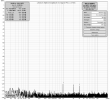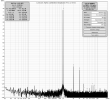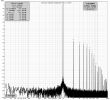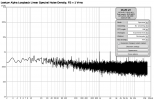I was interested in a similar DAC/ADC some time ago. After reading about and playing with some, I realized that there are use cases in studios which put competitive pressure on evolution of loop-precise DAC/ADC interfaces. One of them: addressing a situation when there is just one valuable piece of vintage outboard processor in a studio, which needs to be applied to multiple tracks and/or channels.
So, instead of using that vintage piece in real time, mixing or mastering engineer inserts it in a DAC-vintage-ADC loop, applied to several tracks in a DAW, one track at a time. A simple test of faithfulness of the interface is to insert a straight wire (vintage processors tend to have a bypass button for that) and null the input vs output.
Another test is to automate the loop in DAW and keep repeating it until the engineer can hear the difference between the original digitized sample and the outcome of multiple DAC/ADC conversions, which may run into hundreds of repetitions for good interfaces made after 2007.
The list of usual suspects in lower-priced range included top-tier interfaces from RME, Focusrite, and MOTU. One price range up was noticeably more expensive, and included top-tier interfaces from Lynx, Antelope, and Merging. There was even more expensive range, yet those were too expensive for me, and I didn't investigate them any further.
Price-wise, I believe professional gear doesn't have as many undiscovered bargains as audiophile electronics. A ten years old Lynx Aurora costs about the same as a new MOTU interface with comparable characteristics. If you think you found a bargain nobody knows about, I advise you to think again
AES research articles have frequently listed RME DAC/ADC over the past decade in the context of measurements. Lately Focusrite started appearing more often than before. All good brands. I think you'd be OK with pretty much any top-tier rack-mountable interface from the six companies I mentioned, made in the last 10 years or so.
So, instead of using that vintage piece in real time, mixing or mastering engineer inserts it in a DAC-vintage-ADC loop, applied to several tracks in a DAW, one track at a time. A simple test of faithfulness of the interface is to insert a straight wire (vintage processors tend to have a bypass button for that) and null the input vs output.
Another test is to automate the loop in DAW and keep repeating it until the engineer can hear the difference between the original digitized sample and the outcome of multiple DAC/ADC conversions, which may run into hundreds of repetitions for good interfaces made after 2007.
The list of usual suspects in lower-priced range included top-tier interfaces from RME, Focusrite, and MOTU. One price range up was noticeably more expensive, and included top-tier interfaces from Lynx, Antelope, and Merging. There was even more expensive range, yet those were too expensive for me, and I didn't investigate them any further.
Price-wise, I believe professional gear doesn't have as many undiscovered bargains as audiophile electronics. A ten years old Lynx Aurora costs about the same as a new MOTU interface with comparable characteristics. If you think you found a bargain nobody knows about, I advise you to think again
AES research articles have frequently listed RME DAC/ADC over the past decade in the context of measurements. Lately Focusrite started appearing more often than before. All good brands. I think you'd be OK with pretty much any top-tier rack-mountable interface from the six companies I mentioned, made in the last 10 years or so.





